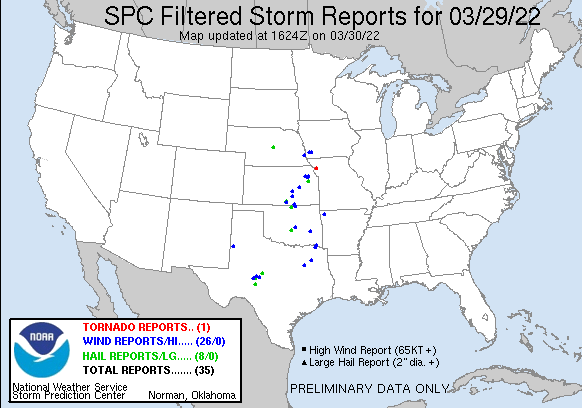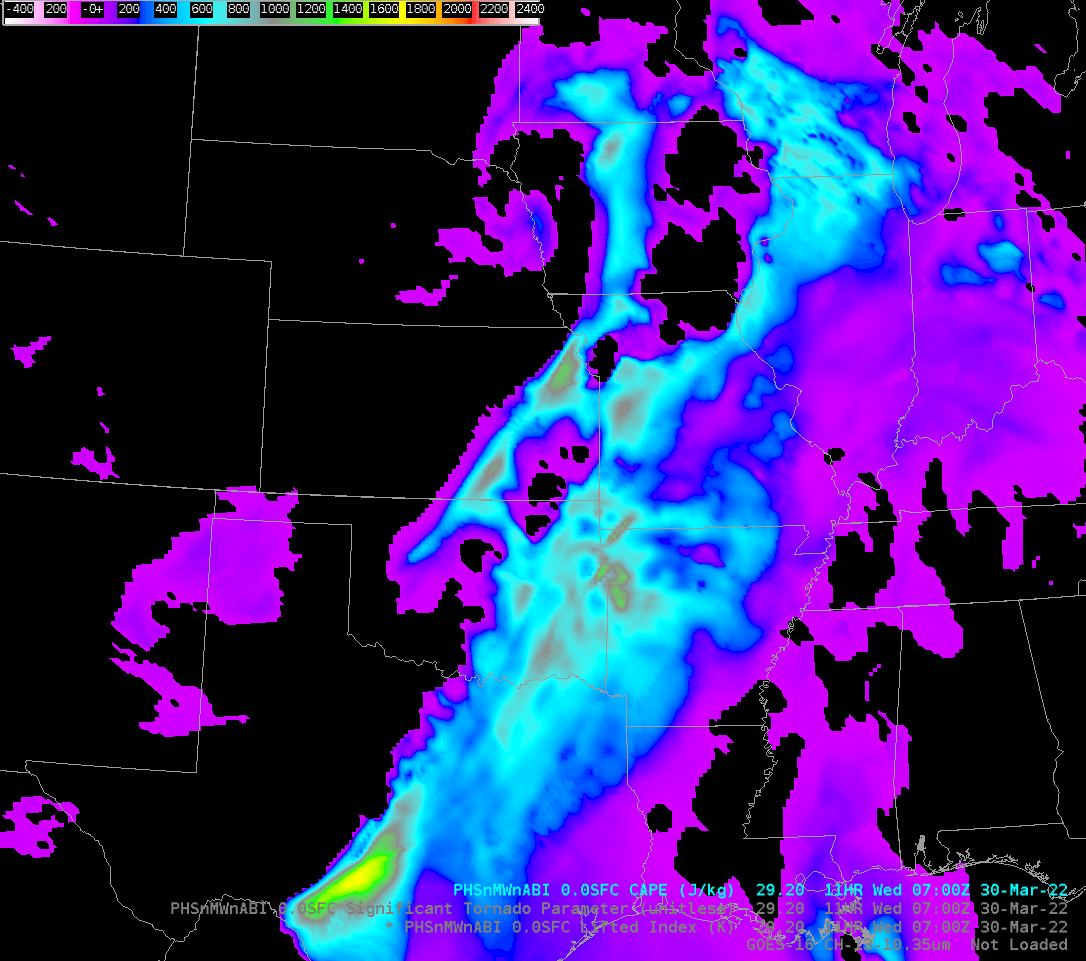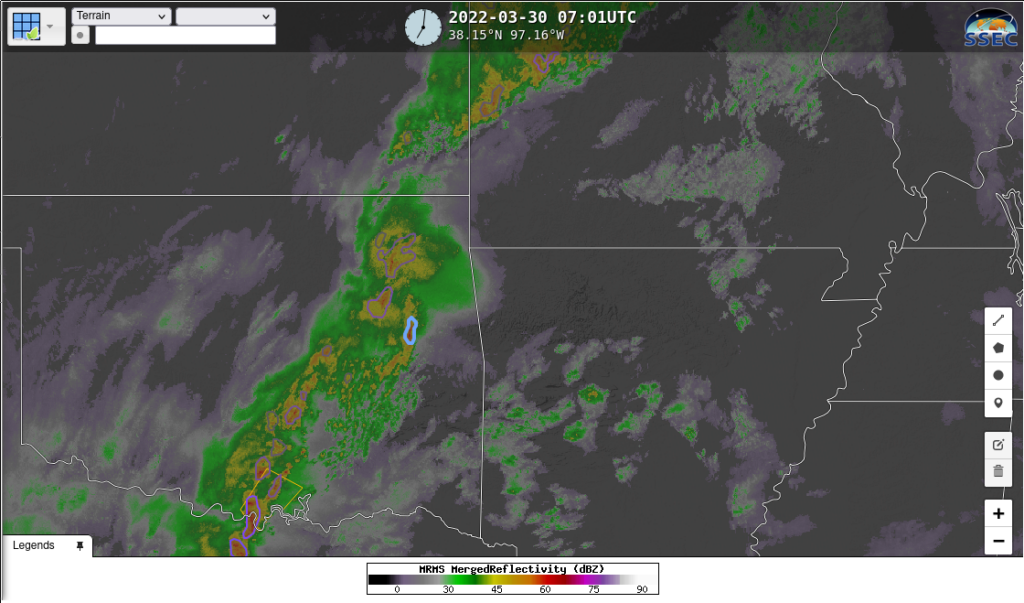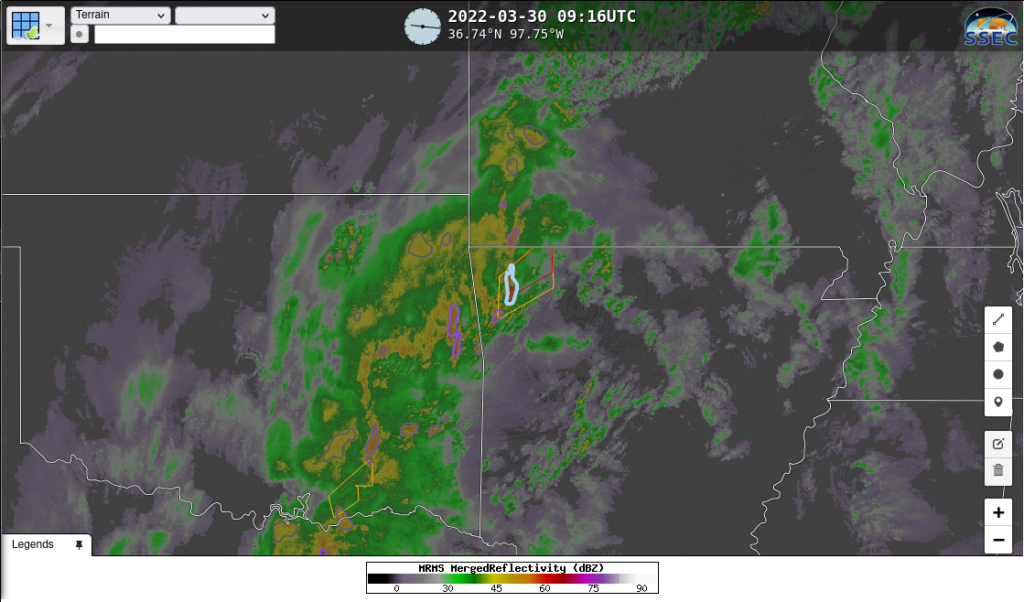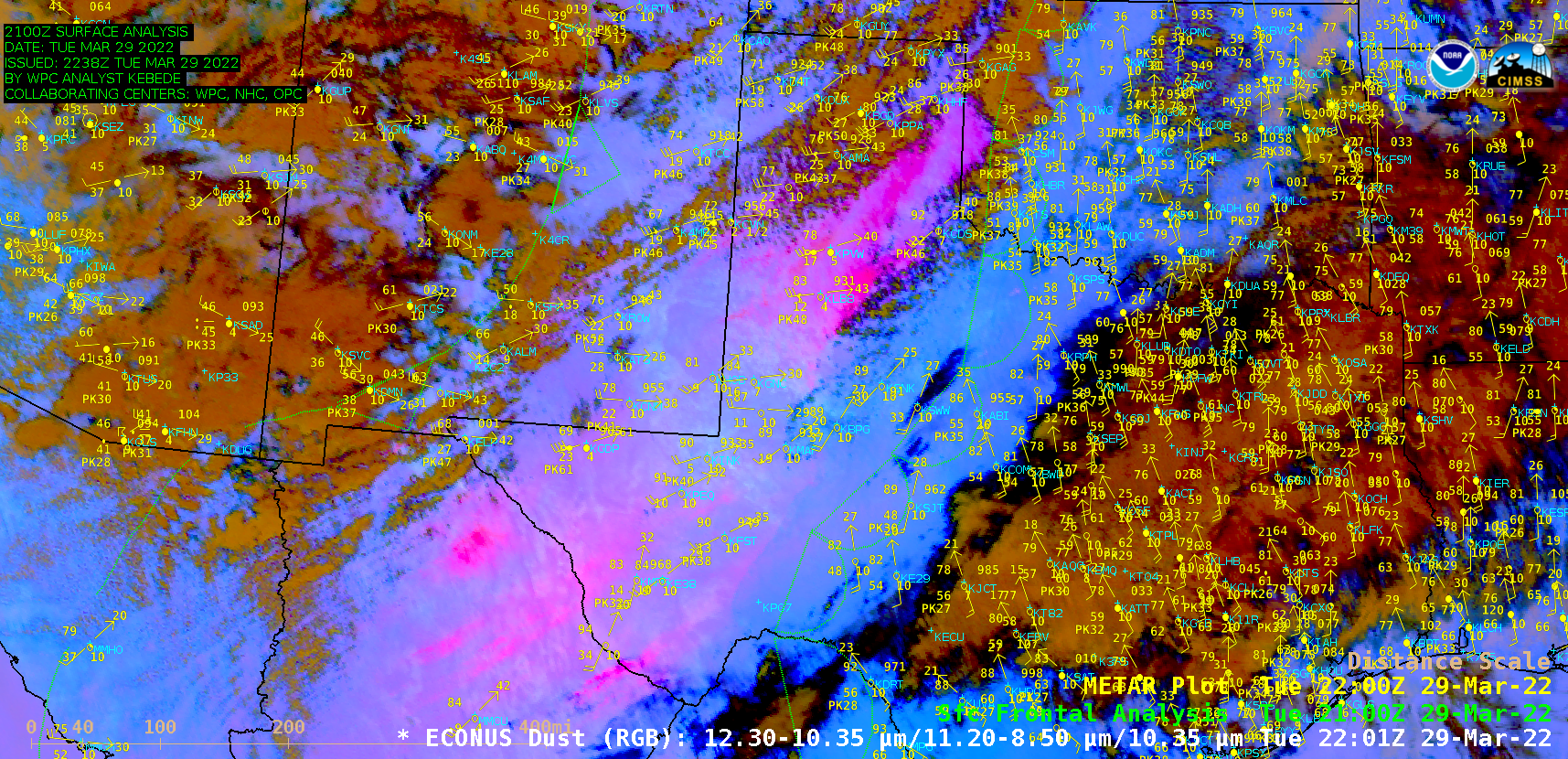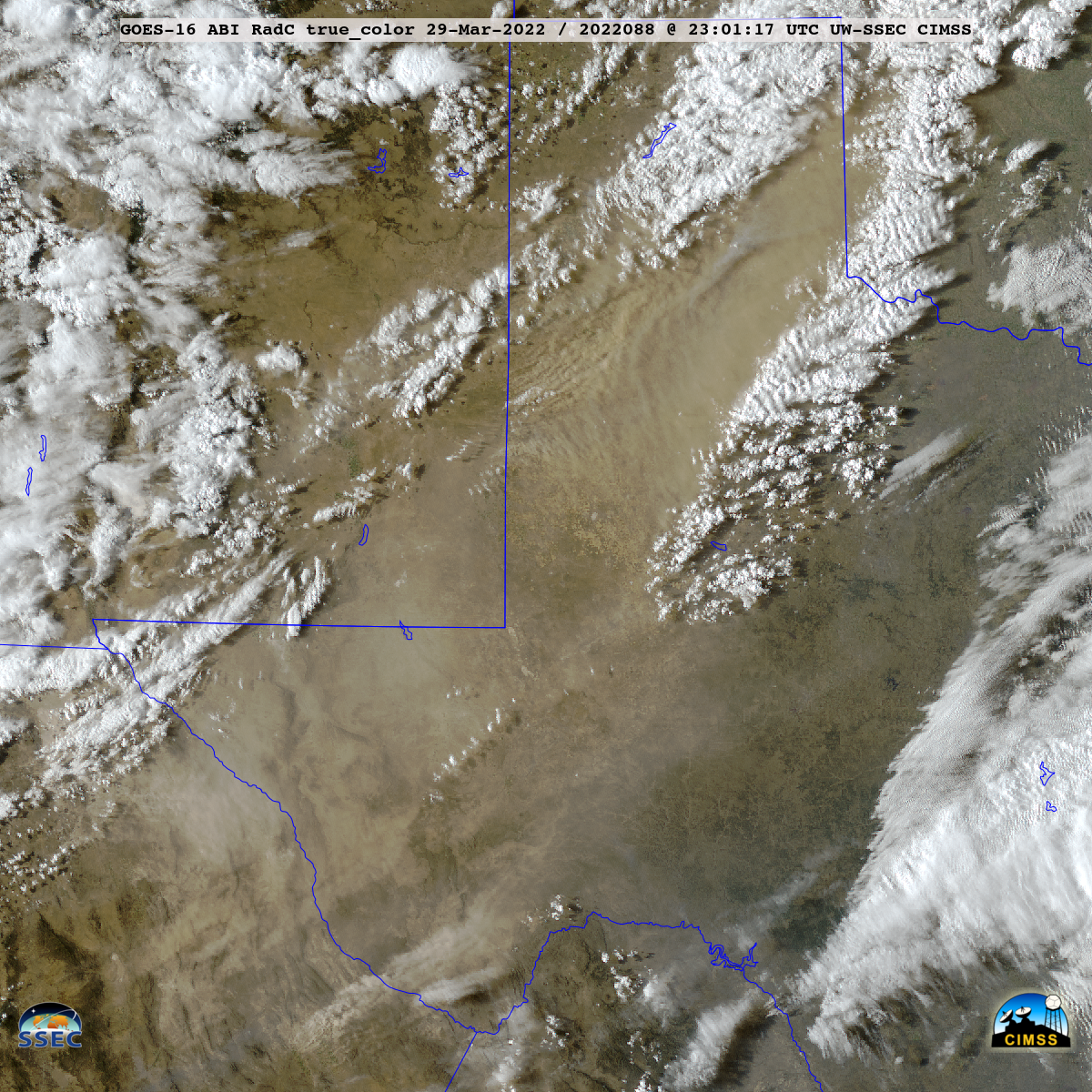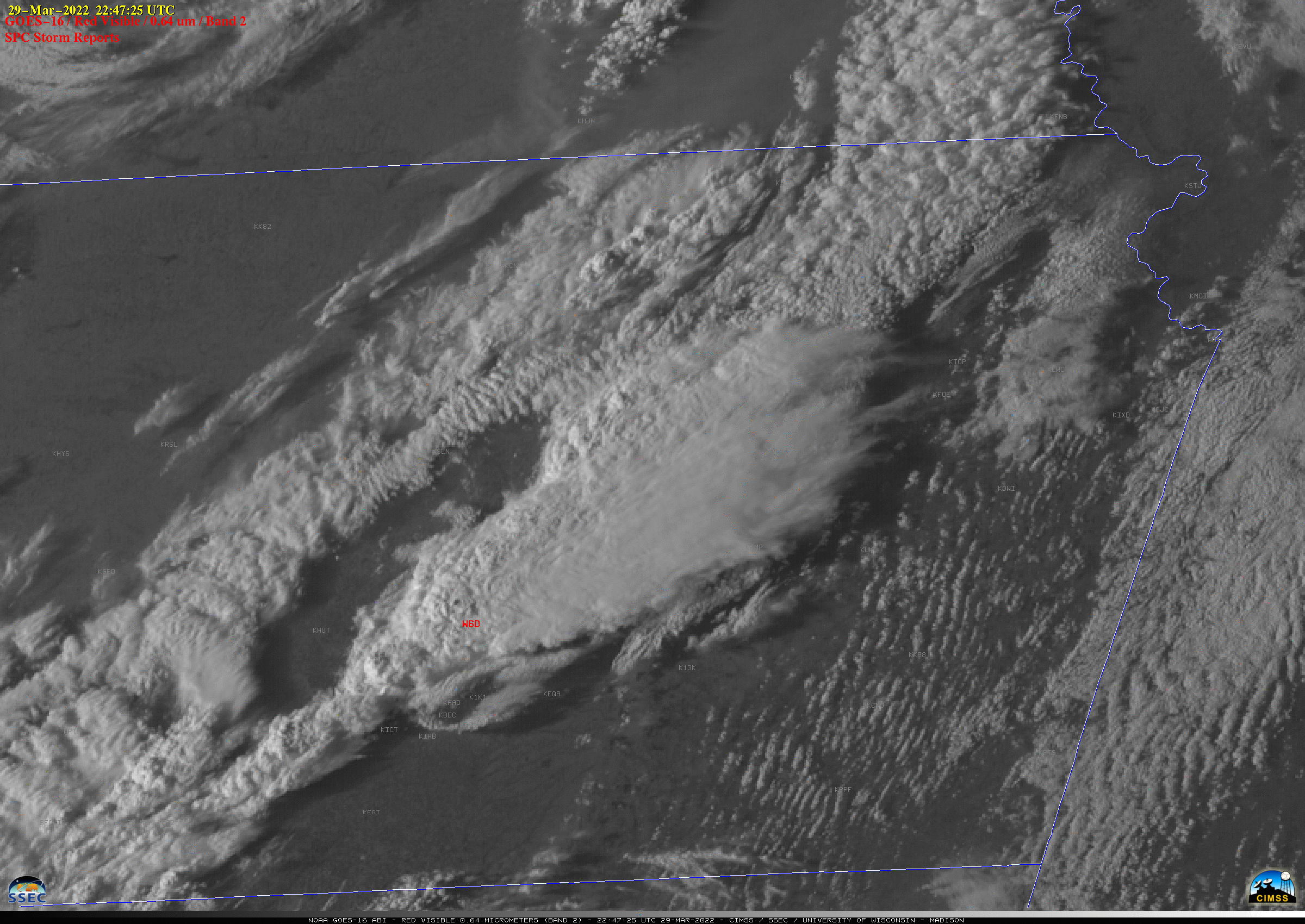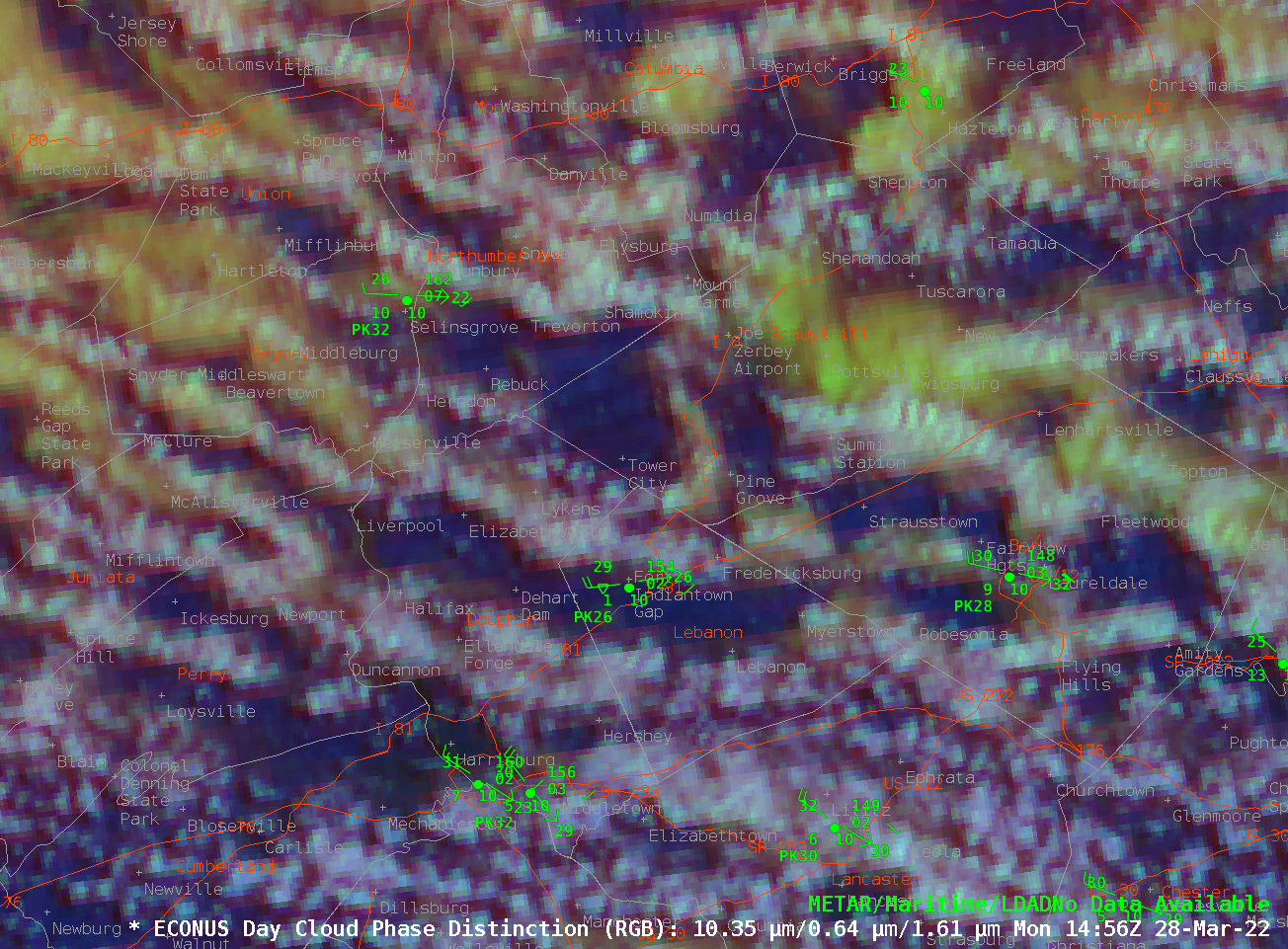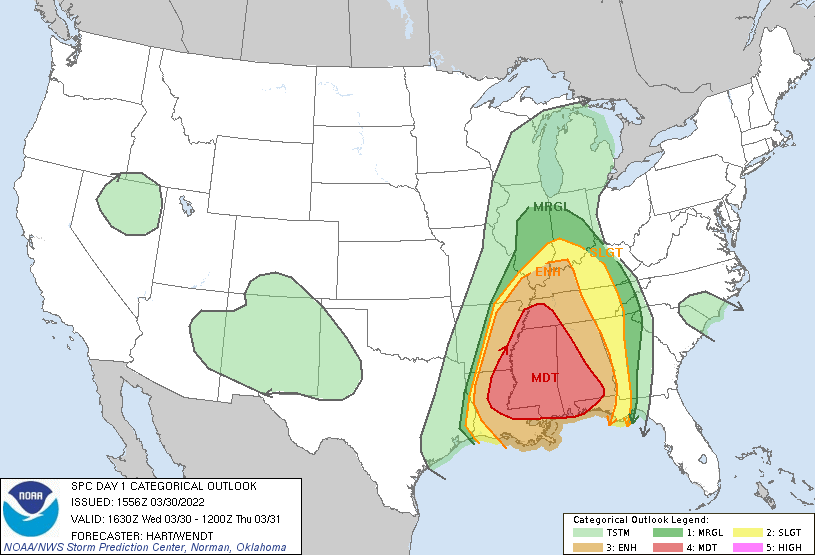
Severe weather occurred over the Deep South on 31 March (see this blog post); NOAA’s Storm Prediction Center (SPC) showed a Moderate Risk of severe weather over a region centered on Alabama; the toggle above shows the Moderate Risk in combination with the Tornadic Probailities. Here are the storm reports for this event. The overlap between the risk area and severe weather is here (or here at the SPC website); the overlap between the risk area and observed tornadoes is shown below (and here at the SPC website).

Observed tornadoes and SPC Risk from 1630 UTC on 30 March 2022 (Click to enlarge)
This blog post discussed output from Polar Hyperspetral modeling and how it could be used the day before. The animation below shows the Significant Tornado Potential parameter forecast at 2100 UTC on 30 March from initializations at 1200, 1400, 1700, 1800 and 2000 UTC (that is, 90, 7-, 4-, 3- and 1-hour forecasts). The areal extent of the maximum STP values is decreasing with time. Storm Reports from 30 March suggest that tornadic activity after 2100 UTC was in Mississippi and Louisiana. In addition, the largest values of STP did not extend to the into the northern part of the Moderate Risk.

In addition to being in the local AWIPS at CIMSS, in preparation for the Hazardous Weather Testbed, model output is also available at this link. The 00-h through 08-h forecast Lifted Index and Significant Tornado Parameter for this event, initialized at 2100 UTC, are shown below. The forecast shows that although the thermodynamic forcing might be dropping — as measured by the Lifted Index — the low-level wind field is becoming more favorable, as measured by the increase of STP as the system moves into Alabama.
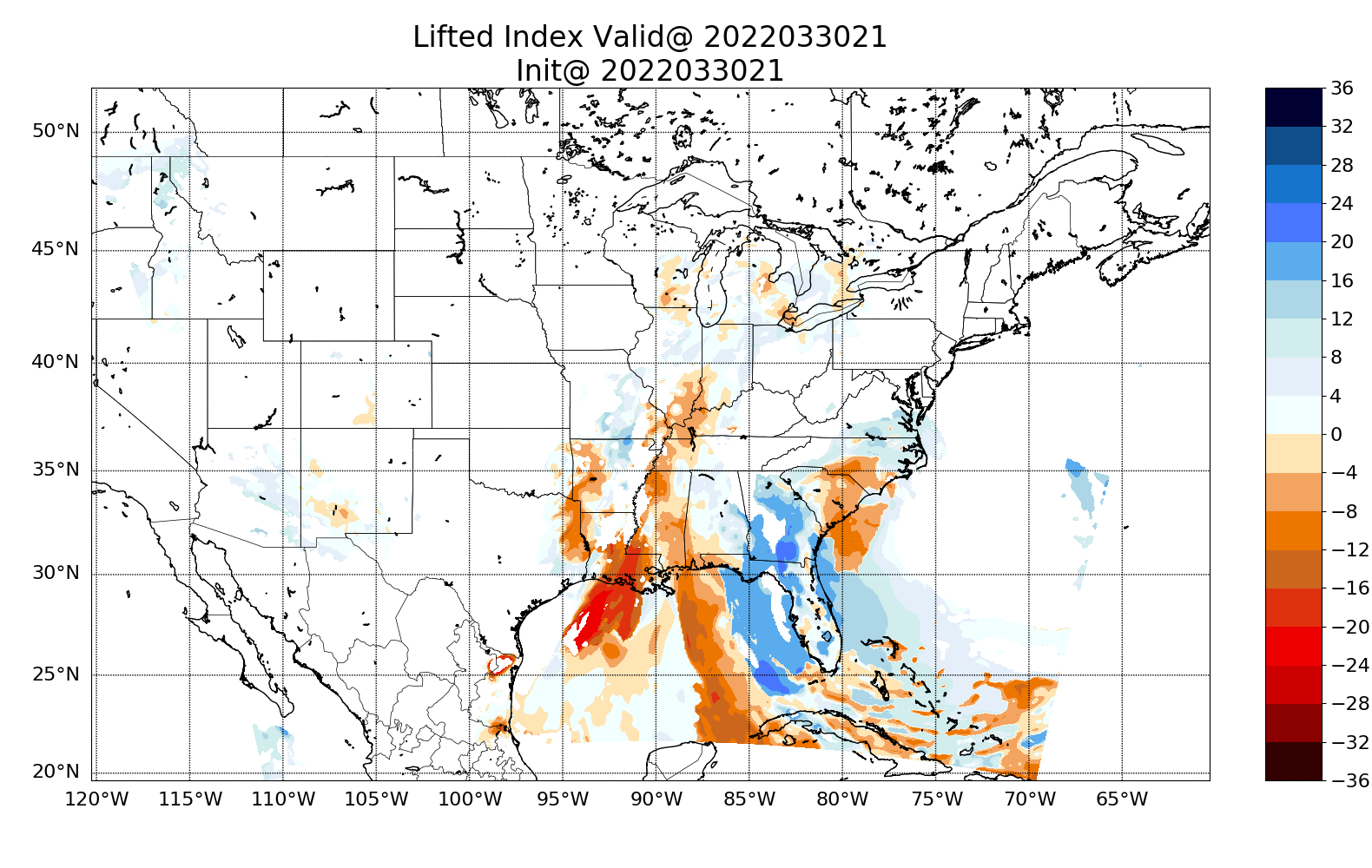
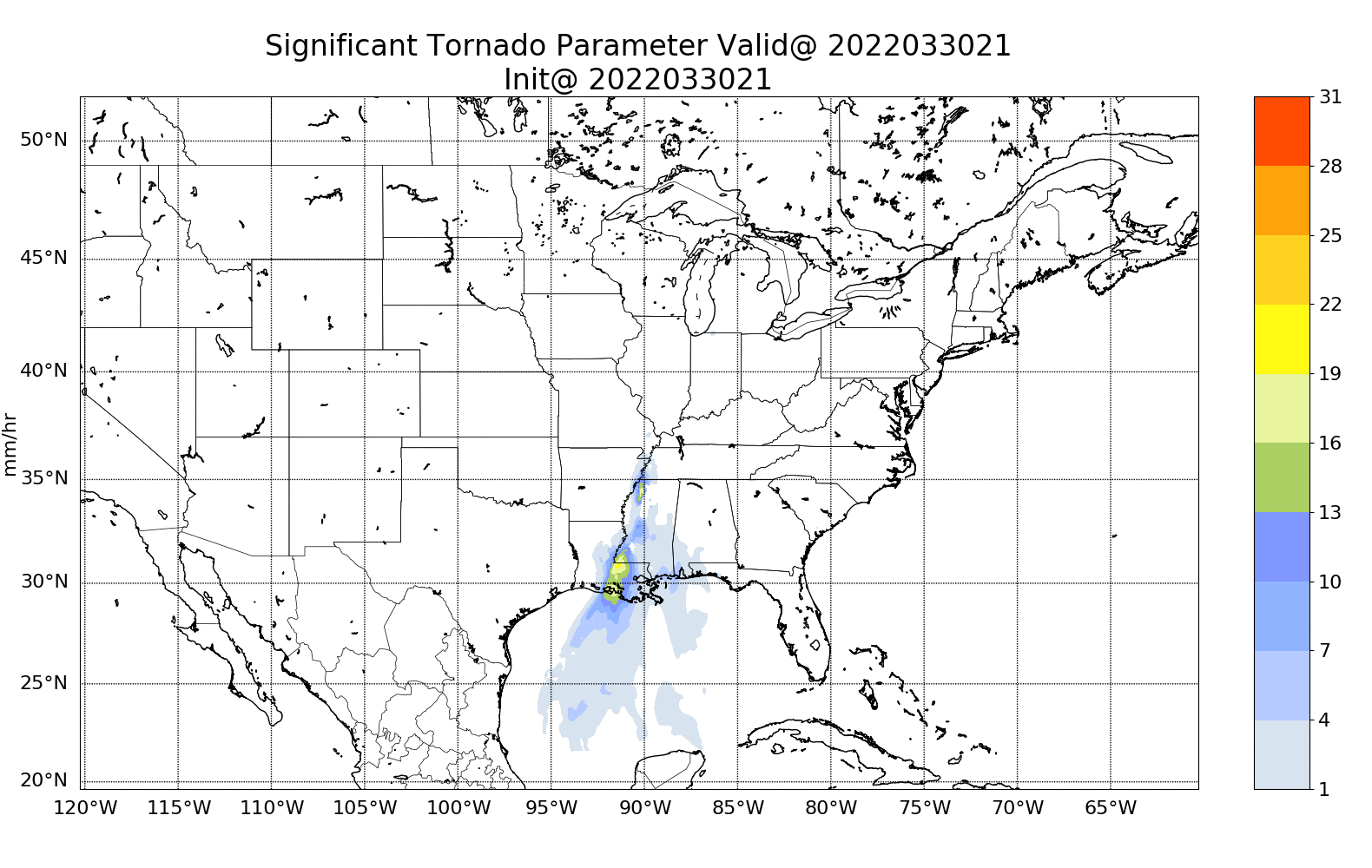
Which polar orbiters provide data to this modeling effort? Both Metop-B and Metop-C, as well as Suomi-NPP and NOAA-20. A 2100 UTC model initialization will include data from the afternoon passes of Suomi-NPP and NOAA-20 (it generally takes at most an hour for the polar orbiting data to be incorporated into the Data Fusion initializations). You can view orbital paths from the Metop satellites, and from JPSS, at this website.
View only this post Read Less



